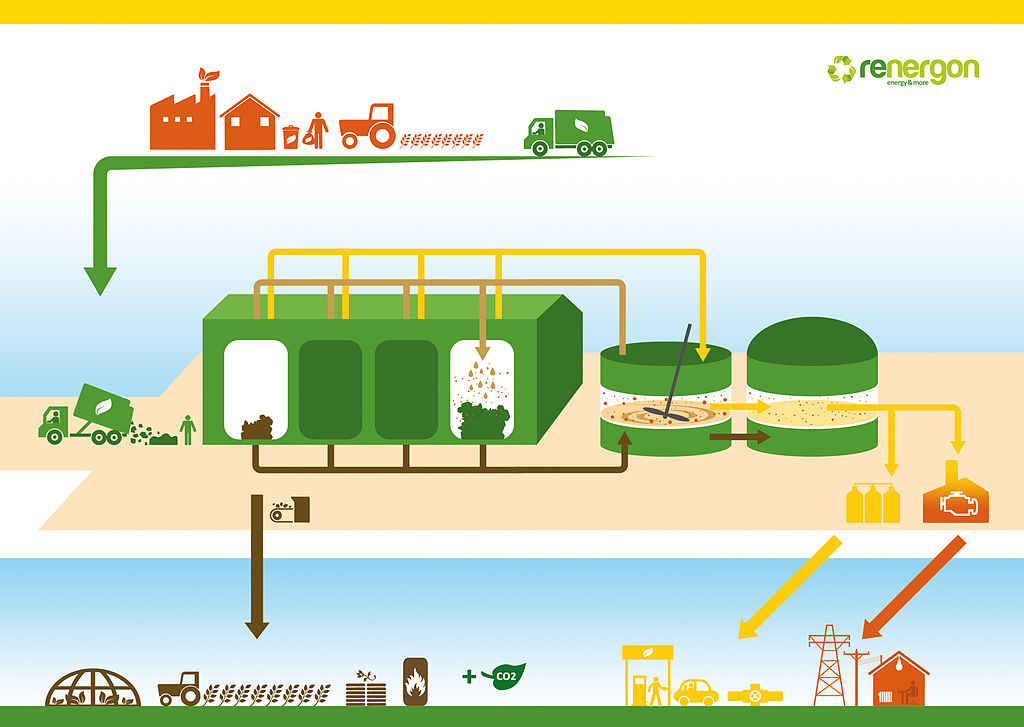News
What is Renewable Natural Gas (RNG)?

Renewable Natural Gas, or RNG, is a form of biogas that is generated by anaerobic bacteria that is refined to make it suitable for use as a replacement for natural gas derived from fossil fuel sources. The raw biogas typically consists of around 45-65% methane, depending on its source, and needs to undergo several steps to convert it into RNG. The refinement process includes removing impurities such as carbon dioxide, moisture, and other contaminants often found in trace levels such as volatile organic compounds, siloxanes and hydrogen sulfide, and reducing the amount of oxygen and nitrogen that may be present. Once the RNG has been purified, it consists of at least 90% methane, the primary component. RNG that is injected in natural gas pipelines typically consist of between 96-98% methane.
RNG offers great potential as an alternative to natural gas derived from fossilized sources. It can be used to generate electrical power or to provide heat. It can also be used as a fuel in vehicles, and as a feedstock in bio-products. RNG can either be used on site (close to where it is produced), or it can be injected into natural gas distribution pipelines or transmission networks.
Sources of Renewable Natural Gas
In the US, there are currently four key biogas sources used for RNG production: landfill gas recovered from landfill sites; anaerobic digestion of sewage sludge residue at wastewater treatment plants; anaerobic digestion of livestock waste; and anaerobic digestion of organic waste (for example wood pulp, food waste, etc) derived from other sources. In all these operations, biogas is formed as a byproduct as methane-forming microorganisms break down organic matter (waste material derived from plants or animals) in an oxygen-free (anaerobic) environment.
Landfill Gas
Landfill gas forms underneath the piles of waste as anaerobic bacteria decompose the organic waste material in the oxygen-free environment under the layers of waste. Landfill gas is rich in methane, which not only poses an explosion risk, but is also a potent greenhouse gas contributing to climate warming. In fact, landfills are one of the largest anthropogenic sources of methane. However, landfill gas can be captured and converted to a valuable source of energy. In many cases, government regulations require a landfill to capture the landfill gas generated onsite, which is then flared to prevent it escaping into the atmosphere or migrating offsite. As a result, many sites already have landfill gas collection infrastructure in place, which can potentially be upgraded to enable it to be captured and treated for energy use.
Municipal Wastewater Treatment Facilities
Many municipal wastewater treatment plants use anaerobic digestion as part of the final sewage treatment process. The sewage sludge that remains after the initial treatment process is fed into an anaerobic digestor (either on site or it is sent to another facility that has anaerobic digestor available), where anaerobic bacteria break down the organic sewage sludge forming a methane-rich biogas as a byproduct. As this biogas has an extremely low oxygen and nitrogen content, it is particularly suitable for converting into renewable natural gas. Many wastewater treatment facilities with anaerobic digestors onsite co-digest sewage sludge with waste sourced from other sources, for example, food waste. Codigestion not only helps reduce the amount of food waste ending up on landfills but also enables these facilities to use their anaerobic digestors more efficiently, adjusting the solid to liquid ratio to improve the digestion process and maximize biogas production.
Livestock Waste
Animal waste (manure) from a wide range of livestock, including cows, pigs and poultry, can be fed into an anaerobic digestor, where it is broken down into two useful components: biogas (a valuable source of energy) and digestate (a valuable soil enhancer applied as a fertilizer to encourage crop growth). Some livestock farms also co-digest manure with other organic waste (for example waste from beverage plants and distilleries, industrial food manufacturers, diaries or slaughter houses).
Organic Waste Management Operations
Stand-alone anaerobic digesters have emerged as a new source of renewable natural gas in the US. These operators process organic material such as food waste, which can also be co-digested with other organic material, for example garden waste, to produce biogas. Considering that food waste generated in the US provides an unlimited source of feedstock for anaerobic digestion, RNG production from this relatively new source could potentially increase in the future.Source
An Overview of Renewable Natural Gas from Biogas. July 2020, EPA 456-R-20-001.
Image Credit: Thzorro77 / CC BY-SA


